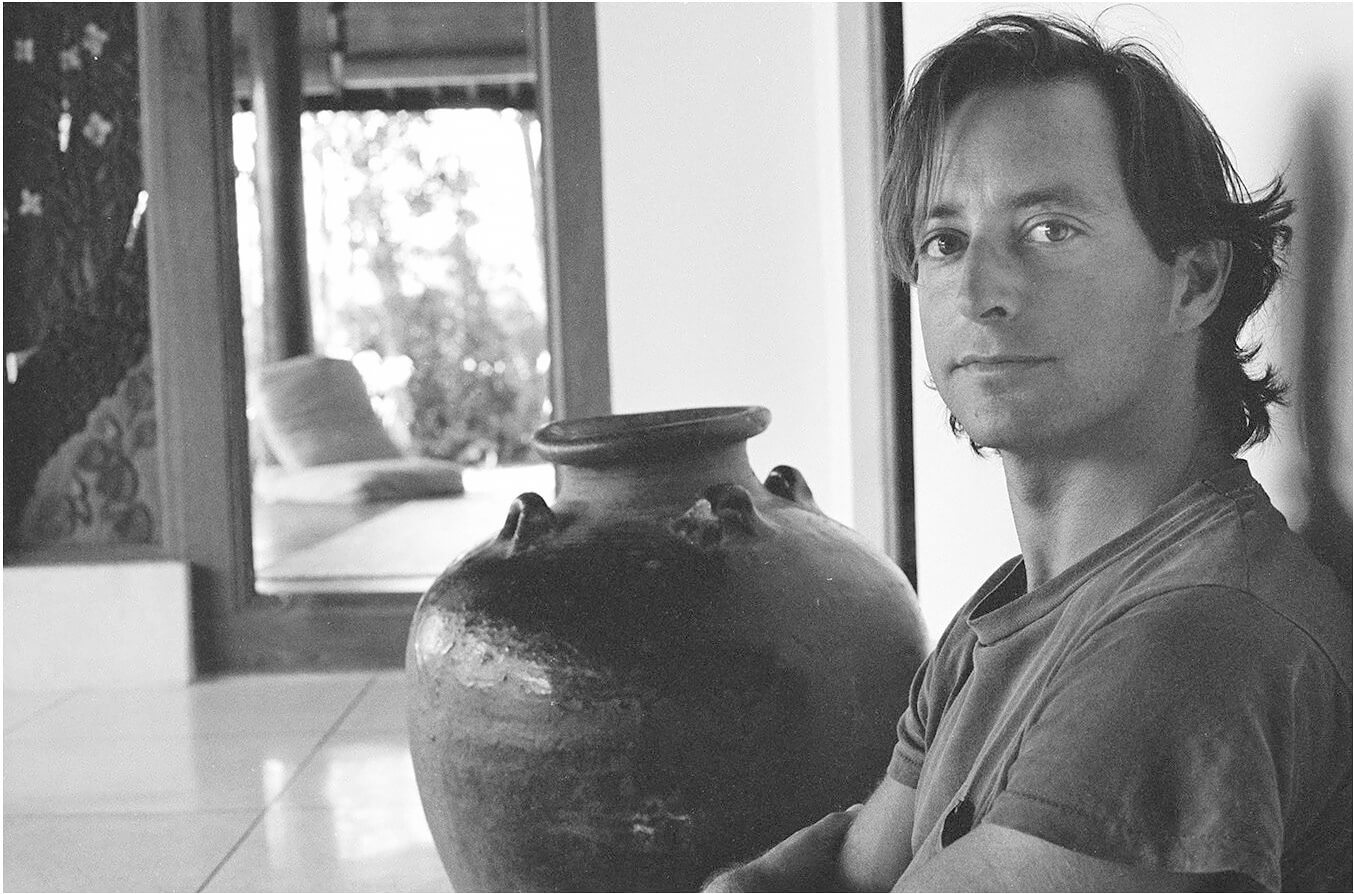Herb Ritts began his photographic career in the late 70's and gained a reputation as a master of art and commercial photography. In addition to producing portraits and editorial fashion for
Vogue,
Vanity Fair,
Interview and
Rolling Stone, Ritts also created successful advertising campaigns for Calvin Klein, Chanel, Donna Karan, Gap, Gianfranco Ferré, Gianni Versace, Giorgio Armani, Levi's, Pirelli, Polo Ralph Lauren, Valentino among others. Since 1988 he directed numerous influential and award winning music videos and commercials. His fine art photography has been the subject of exhibitions worldwide, with works residing in many significant public and private collections.
In his life and work, Herb Ritts was drawn to clean lines and strong forms. This graphic simplicity allowed his images to be read and felt instantaneously. They often challenged conventional notions of gender or race. Social history and fantasy were both captured and created by his memorable photographs of noted individuals in film, fashion, music, politics and society.
Ritts was committed to HIV/AIDS related causes, and contributed to many charitable organizations, among them amfAR, Elizabeth Taylor AIDS Foundation, Project Angel Food, Focus on AIDS, APLA, Best Buddies and Special Olympics . He was also a charter member on the Board of Directors for The Elton John Aids Foundation.
Source: www.herbritts.com
Born in Los Angeles, to a Jewish family, Ritts began his career working in the family furniture business. His father,
Herb Ritts Sr., was a businessman, while his mother,
Shirley Ritts, was an interior designer. He moved to the East Coast to attend
Bard College in New York, where he majored in economics and art history, graduating in 1975.
Later, while living in Los Angeles, he became interested in photography when he and friend
Richard Gere, then an aspiring actor, decided to shoot some photographs in front of an old jacked-up Buick. The picture gained Ritts some coverage and he began to be more serious about photography.
During the 1980s and 1990s, Ritts prominently photographed celebrities in various locales throughout California. Some of his subjects during this time included
Cher,
Tina Turner.
Elizabeth Taylor,
Vincent Price,
Madonna,
Denzel Washington,
Johnny Depp,
Ronald Reagan,
David Bowie,
Courtney Love,
Liv Tyler,
Matthew McConaughey,
Britney Spears,
Björk,
Prince,
Michael Jackson,
Axl Rose,
Slash, and
Mariah Carey. He also took many fashion and nude photographs of fashion models
Naomi Campbell,
Stephanie Seymour,
Tatjana Patitz,
Christy Turlington, and
Cindy Crawford, including
"Tatjana, Veiled Head, Tight View, Joshua Tree, 1988." Ritts' work with those models ushered in the 1990s era of the supermodel and was consecrated by one of his most celebrated images,
"Stephanie, Cindy, Christy, Tatjana, Naomi, Hollywood, 1989" taken for
Rolling Stone Magazine.
He also worked for Interview, Esquire,
Mademoiselle,
Glamour,
GQ,
Newsweek,
Harper's Bazaar,
Rolling Stone,
Time,
Vogue,
Allure,
Vanity Fair,
Details, and
Elle.
From 1996 to 1997 Ritts' work was displayed at the
Museum of Fine Arts in Boston, attracting more than 250,000 people to the exhibit, and in 2003 a solo exhibition was held at the
Daimaru Museum, in Kyoto, Japan.
On December 26, 2002, Ritts died in Los Angeles of complications from pneumonia at the age of 50. Ritts was openly gay, and according to Ritts' publicist,
"Herb was HIV-positive, but this particular pneumonia was not PCP (pneumocystis pneumonia), a common opportunistic infection of AIDS. But at the end of the day, his immune system was compromised."Source: Wikipedia
